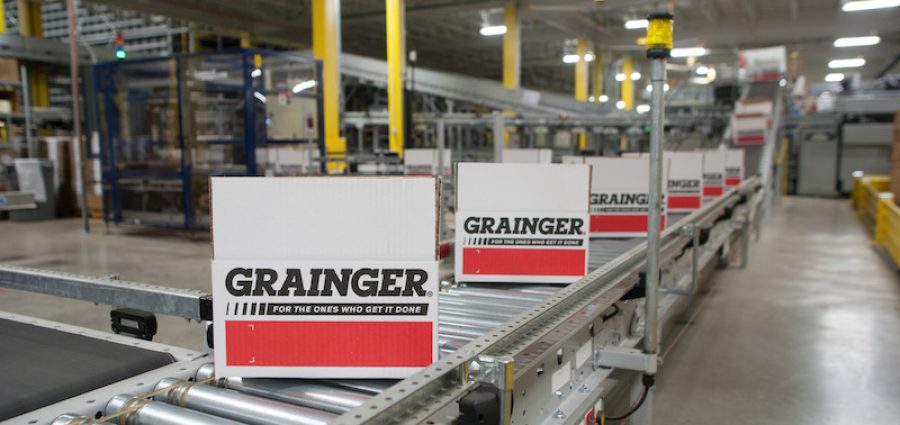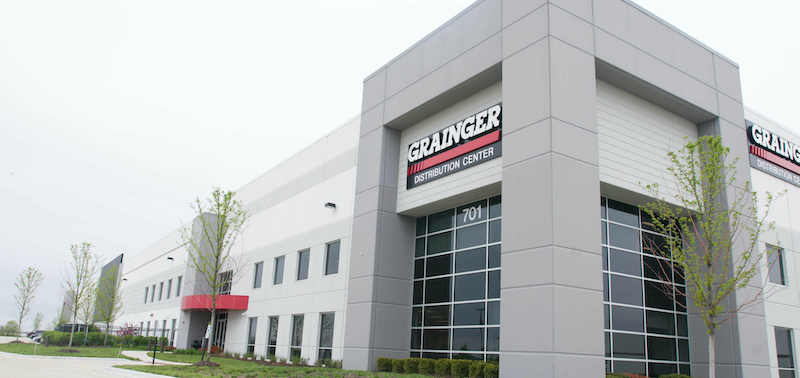W.W. Grainger’s second quarter earnings were marked by supply chain issues, raw material shortages, labor shortages and transportation challenges, but it continued to thrive and adapt, according to CEO and Chairman D.G. Macpherson.
Chicago-based Grainger once again ruled the roost in MDM’s most recent rankings as the top distributor in the MRO Industrial category while also coming in at No. 2 in the Top 40 Industrial & Construction category.
On Friday, Grainger posted second-quarter sales of $3.2 billion, which was up 13.1% year-over-year and up by more than $3 billion from this year’s first quarter. For the first six months of this year, Grainger’s sales increased 7.8% to $6.3 billion while its profit increased 61.3% to $463 million.
Grainger estimated non-pandemic sales growth would be about 22% in July. The company’s non-pandemic sales were up 31% year-over-year in 2Q.
Macpherson said on Friday’s call that gross profit was somewhat impacted in May by the changes in the CDC mask guidelines halfway through the second quarter. Grainger’s pandemic-related sales were down 28% year-over-year, as well as down in April (22%), May (35%) and June (26%.) Grainger estimated that July growth will be down about 28% over July 2020, in line with what it saw in the second quarter of this year, but that could change incrementally again with new CDC guidelines announced last week.
“I will say that every single external announcement in the pandemic has driven behavior,” Macpherson said on the earnings call. “We are expecting in the short term to get some increased mask sales. Things are so fluid and change so fast, it’s really hard to tell.”
Clearly, Grainger’s scale enabled it to pivot during last year’s pandemic by finding and sourcing personal protection equipment while also getting a boost to its bottom line from its U.S.-based Zoro division, which focuses on small-to-medium businesses, and its MonotaRO division that faces fewer competitors in serving large enterprise customers in Japan.
In the second quarter, Zoro’s daily sales increased 32.6% while gross profit improved 31.5%. As of 2Q, Zoro had 7.5 million SKUs and was well on its way of reaching its goal 8 million by the end of the year. MonotaRO’s daily sales grew 16.7% while gross profit increased by 26.4%, which was 25 basis points above 2020
Here’s a look at a few areas that Macpherson highlighted during the earnings call.
Supply chain issues and labor shortages
Macpherson said Grainger is actively leveraging its network to deal with supply-chain constraints. A customer in New York that would typically fulfill its order from Grainger’s Northeast distribution center now may receive part of that order from Grainger’s Louisville distribution center.
“In this case, the order may be fulfilled from Louisville, adding an extra day and incremental cost to the order,” he said. “But we are able to leverage our network to provide and protect our great service. We are also leveraging our branches for more shipping in this environment.
“In addition, we have accelerated the ramp up of our Louisville DC, which has helped alleviate capacity constraints. This building is a great asset for Grainger and will continue to ramp capacity through the next 18 months. The good news is that we still have very high availability in our network even if the product comes from an alternate location.”
In response to the ongoing labor shortages this year, Grainger increased its wages to attract and retain talent, especially in the company distribution centers.
“We’ve implemented robust training programs to onboard new team members and train existing team members to work throughout our buildings,” Macpherson said. “We have made great progress in closing staffing gaps and will continue to do so over the third quarter.”
Face-to-face meetings are back
Macpherson said he was out in the field “quite a bit” in the second quarter in order to spend time with customers and get their feedback. If a customer is accepting in-person visits, Grainger will be there, he said.
“I’m hearing consistently that while we may be delivering a bit differently than the past. We are serving our customers better than the competition,” Macpherson said. “We have validated this with feedback on our recent customer service and a vast majority said we were doing better than [other] distributors right now.
The majority of Grainger’s more than 3.5 million customers are now open to onsite visits, according to Macpherson.
“We’ve been able to visit customers to fill inventory bins and do the things that we do from a servicing side, but in terms of customer discussions we are pretty much running like normal,” he said. “There’s some customers that don’t allow visits, but I’ve been in front of probably 10 to 15 customers in the last six, seven weeks, and those conversations feel very normal. We’re talking about how to expand the business by really leveraging the work we’ve done to help them stay up and running in the pandemic and keep their people safe to try to improve the relationship and grow.
“I think that’s going to be a positive story moving forward.”
Transportation challenges
Because it’s linked to the product shortages and labor issues, Macpherson said transportation continued to be challenging in 2021. Grainger has always prioritized optimal routes and cost efficiencies, but over the last few months it has found new ways to partner with its carriers to handle volume and provide flexibility.
“It’s important to note that the overall freight market is volatile and uncertain,” Macpherson said. “While we are confident in our current plans to manage these challenges, there are a lot of moving pieces and constraints across all modes, parcel, LTL and ocean freight. For example, the ocean freight market has been uncertain as the pandemic surges again in Asia and container costs fluctuate.
“We are ready to respond to any of these dynamics. We expect the supply chain challenges to last through the end of the year and likely well into next year.”
As a result, Grainger is prioritizing its loads more this year than it has in the past. Increased freight rates have led to some cost increases that Grainger expects to recoup at some point. Grainger is trying to balance the increased freight costs of containers from somewhere like Asia with providing its customers with the services and products they need.
“It’s challenging,” Macpherson said. “We do think that ultimately it will balance out. But for right now, it’s relatively chaotic in the freight market.
Related Posts
-
Industrial distributor appoints Julie Myerholtz to lead the company's cybersecurity vision and strategy.
-
Company said the new Salisbury, N.C., distribution center will better meet growing customer demand.
-
Industrial distributor drives growth across business, maintaining top rankings. To access this page, you must…




